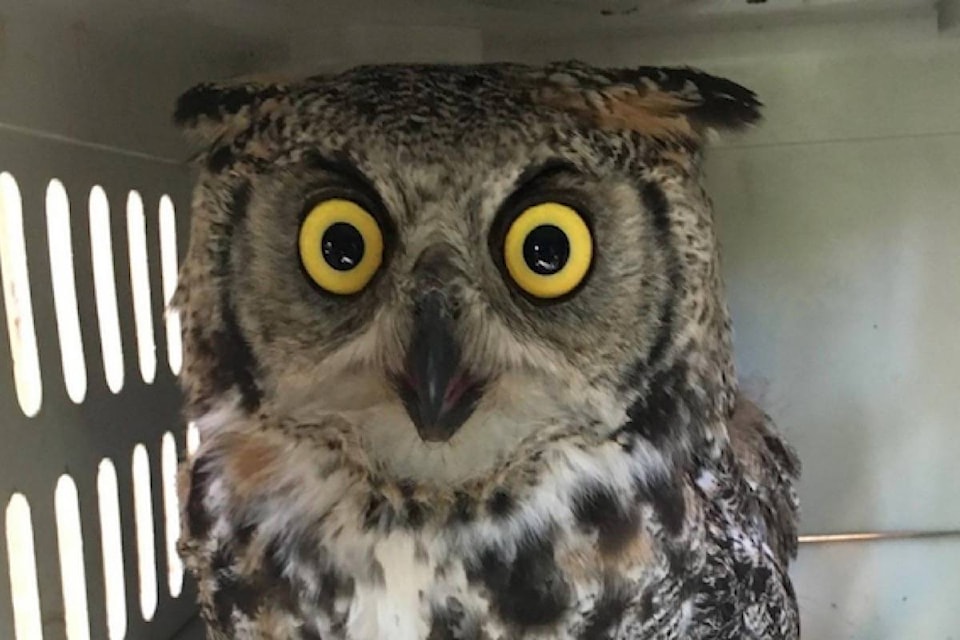Medicine River Wildlife Centre staff have had plenty of success rehabilitating injured owls this winter.
The latest owl to be released back into the wild was a great grey owl on Feb. 3. He was found five days earlier in the Spruce View area lying on a road.
Executive director Carol Kelly said the owl was found about 10 minutes away from the wildlife centre’s animal hospital and his rescuers did not waste any time bringing him in.
“The longer he laid there in the cold, the more complications he’d end up with. The fact that somebody found him and responded very, very quickly played a big part in his recovery,” Kelly said.
Fortunately the adult male owl did not have any broken bones.
“We put him on treatment and by morning we saw a marked improvement. He had a relatively mild concussion and responded to treatment really fast in the first two days,” Kelly said.
He had no problem flying when he was released into one of the centre’s outdoor flight pens. He was returned to the same spot where he was found so he could reunite with his mate.
“It was a beautiful wooded area. It was a perfect a great grey owl habitat.”
She said the centre currently has nine owls that have recovered enough to be housed in outdoor flight pens. Another owl was in intensive care, but was responding well to treatment.
“This year we’ve been very fortunate in that the owls that have been coming to us, probably 90 per cent of them we’ve been able to turn around and release, or they will be close to release this spring.”
She said many of the centre’s patients have migrated, or are hibernating, at this time of the year so owls are a common winter patient at the centre. This winter they are in fairly good condition because the weather has been mild so they require less food. The snow isn’t terribly deep so it’s also easier for them to find prey.
Related:
Recuperating bird awaits a flight to B.C.
Don’t blame that smell on skunks
At this time of year, central Albertans should keep an ear out for owls, Kelly said.
“This is breeding season for great horned owls. You might hear them calling back and forth to one another. If you hear it, count the hoots. If it’s four, it’s the male. If it’s five or six, it’s the female.”
szielinski@reddeeradvocate.com
Like us on Facebook and follow us on Twitter
